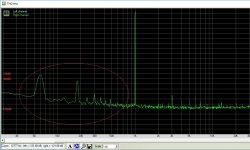I have the same problem, but I realized that these frequencies of 60hz, 180hz ... gain amplitude according to the volume potentiometer.
From the position that the entrance is grounded, OK, no noise.
The noise gains amplitude to the center of the potentiometer, where it is the position of greater noise. From the center to the end it decreases again.
I'm exhausted, and I can not find a solution.🙁
From the position that the entrance is grounded, OK, no noise.
The noise gains amplitude to the center of the potentiometer, where it is the position of greater noise. From the center to the end it decreases again.
I'm exhausted, and I can not find a solution.🙁
That sounds like the pot itself is picking up interference like an aerial, is it screened in any way?
That sounds like the pot itself is picking up interference like an aerial, is it screened in any way?
See the chart.
Do you think it could be the pot itself? It really is not exotic.😛
What I found curious is that the amplitude increases to the center and then begins to fall again.
I do not know what to think anymore. 🙁
Attachments
the output impedance of the vol pot changes as you change the setting.
The amplifier sees that as a changing source impedance.
The highest source impedance gives the highest sensitivity to picking up iterference.
Hence more interference when the vol pot is set near -6dB.
The amplifier sees that as a changing source impedance.
The highest source impedance gives the highest sensitivity to picking up iterference.
Hence more interference when the vol pot is set near -6dB.
Why is a german flag having problems with 60Hz?See the chart.
Do you think it could be the pot itself? It really is not exotic.😛
What I found curious is that the amplitude increases to the center and then begins to fall again.
I do not know what to think anymore. 🙁
the output impedance of the vol pot changes as you change the setting.
The amplifier sees that as a changing source impedance.
The highest source impedance gives the highest sensitivity to picking up iterference.
Hence more interference when the vol pot is set near -6dB.
So, should the potentiometer value be higher than the input impedance?
Should the coupling capacitor between the potentiometer and the input (base transistor or opamp in)not keep the input stable?
See the chart.
Do you think it could be the pot itself? It really is not exotic.😛
What I found curious is that the amplitude increases to the center and then begins to fall again.
I do not know what to think anymore. 🙁
Interestingly, when the pot is in the center, it presents the lowest impedance to the amp. In the mid-position, 'looking back' into the wiper you see the two halves of the pot in parallel (source acts as AC zero for the look-back); this is the lowest impedance point.
This could be an indication that the buzz (which from the frequencies seems to be from the power supply after the rectifier) is picked up somewhere between the input connector and the pot.
How is that connection made? Screened cable? Where is the screen grounded? Where is the pot grounded? Ideally, you would run a screened cable from input connector ground to pot top & ground and ground this connection to the rest of the system at only one point.
Jan
Why is a german flag having problems with 60Hz?
He kept it secret where he is ;-). Might be in a 60Hz country.
I think highest outputimpedance point is center, for linear pot, and that equals half potvalue in parallel (1/4 potvalue).
I think highest outputimpedance point is center, for linear pot, and that equals half potvalue in parallel (1/4 potvalue).
Yes correct, highest point, my mistake.
Anyway it still is a good diagnostic indication. It could be the cable from pot to amp input as well. Similar reasoning. Definitely an area to look into.
Jan
Haha, we know nothing because he has told us nothing..........
Stay calm girls. I returned.😛
He was testing the suggestions, replacing the potentiometer with another of the same value and apparently solved.😉
But I will continue testing tomorrow to be sure, mistrust is great. 😀
^ All very mysterious, have you any idea what's different about this other pot, or aren't you gunna tell us?...........
I am still trying to understand what a volume pot has to do with this thread, which until recently appeared to be about one particular hum problem. Have we been hijacked?
I just ran across some of these FFTs of tomchr's LM3886DR with proper Power86 PSU and Antek 200w 22vac trafo. The forest of noise is surprisingly similar and very low level but nonetheless still there and not flat dead silent like what I like to achieve and can achieve when using SMPS supplies. Interesting how so many people have the perception that SMPS are noisier than linear supplies.
For example, here is a $8 SMPS with a simple 2200uF//0.33R//2200uF//0.33R//6x470uF CRCRC filter pushing 1.25w into 51ohms with a hybrid Quasi complimentary single rail amp can do:
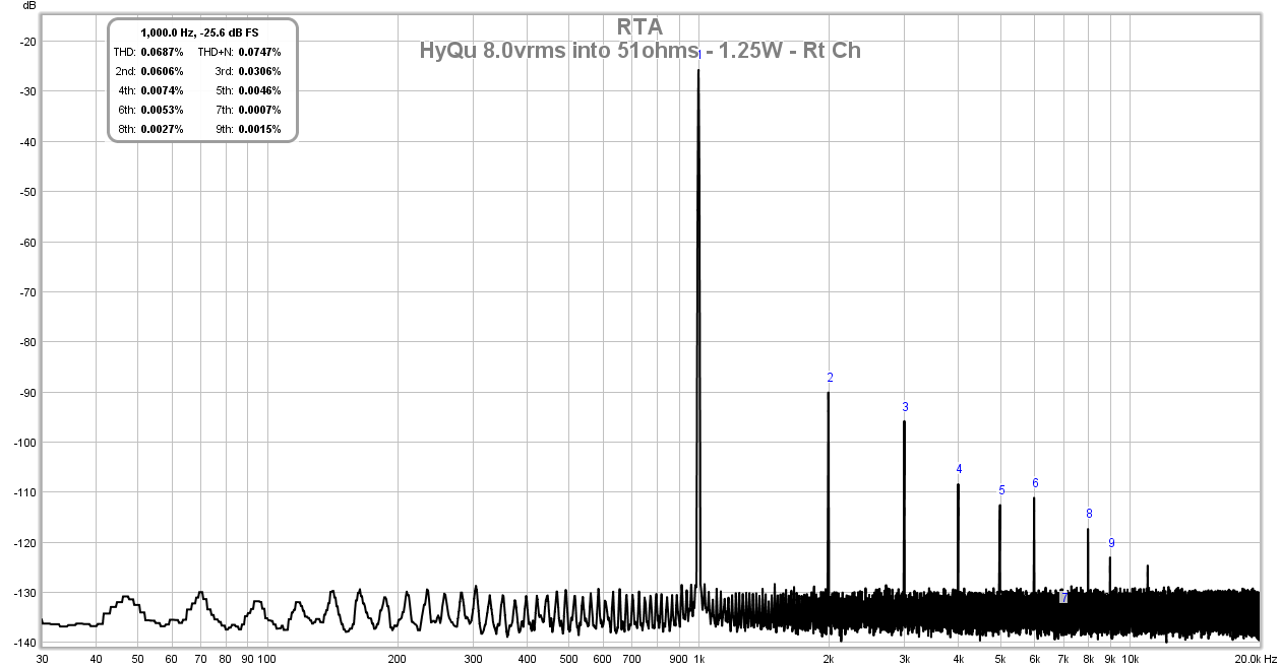
Same amp pushing a much more reasonable 1.41vrms into 270ohm load:
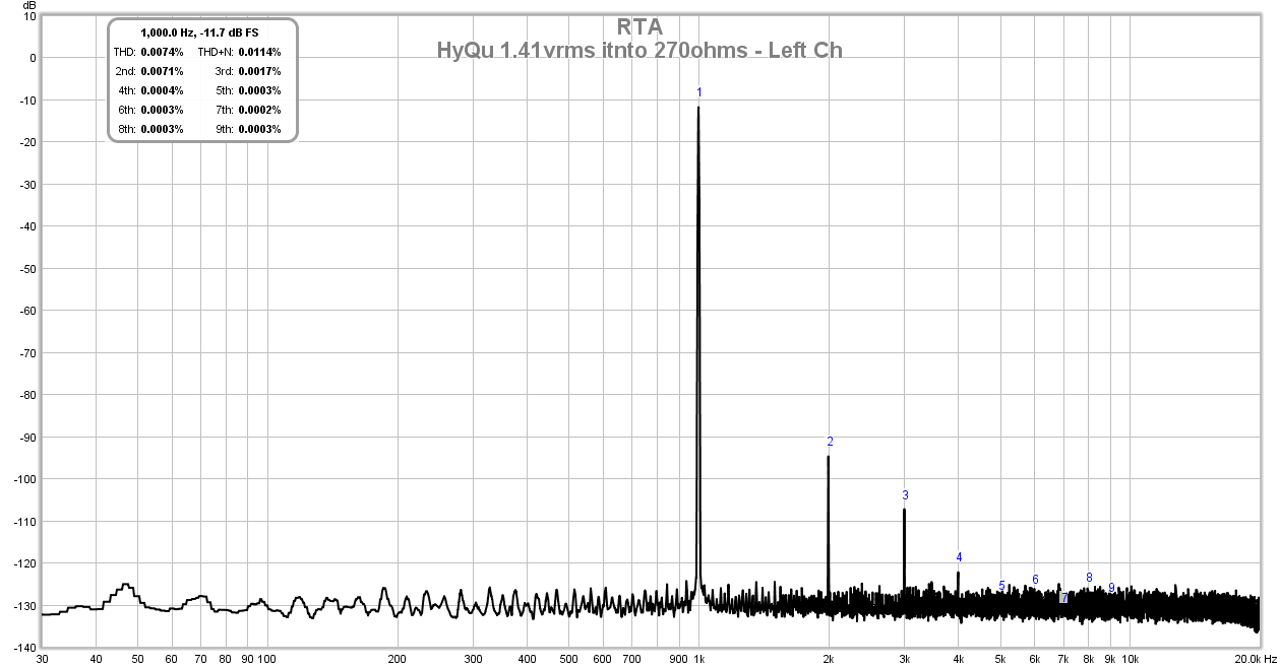
Notice the almost perfect suppression of mains 60/120/180/240Hz peaks and total absence of forest of noise artifacts.
An externally hosted image should be here but it was not working when we last tested it.
For example, here is a $8 SMPS with a simple 2200uF//0.33R//2200uF//0.33R//6x470uF CRCRC filter pushing 1.25w into 51ohms with a hybrid Quasi complimentary single rail amp can do:
Same amp pushing a much more reasonable 1.41vrms into 270ohm load:
Notice the almost perfect suppression of mains 60/120/180/240Hz peaks and total absence of forest of noise artifacts.
Last edited:
I really would like to see a linear supply with the same filter chain in comparison.
For example, here is a $8 SMPS with a simple 2200uF//0.33R//2200uF//0.33R//6x470uF CRCRC filter pushing 1.25w into 51ohms with a hybrid Quasi complimentary single rail amp can do:
Well that was similar to what was presented in Post 1. A linear supply and 33mF//0.253R//33mF. The Linear has the forest of noise and the SMPS was flat. I know it will be worse with only 2200uF//0.33R//2200uF//0.33R//6x470uF. I would need to connect a trafo that makes 28vdc so that the cap Mx can drop to 24vdc. I would need a 20vac linear trafo to do that.
M2 with 8ohm load 8vrms
Linear with trafo:
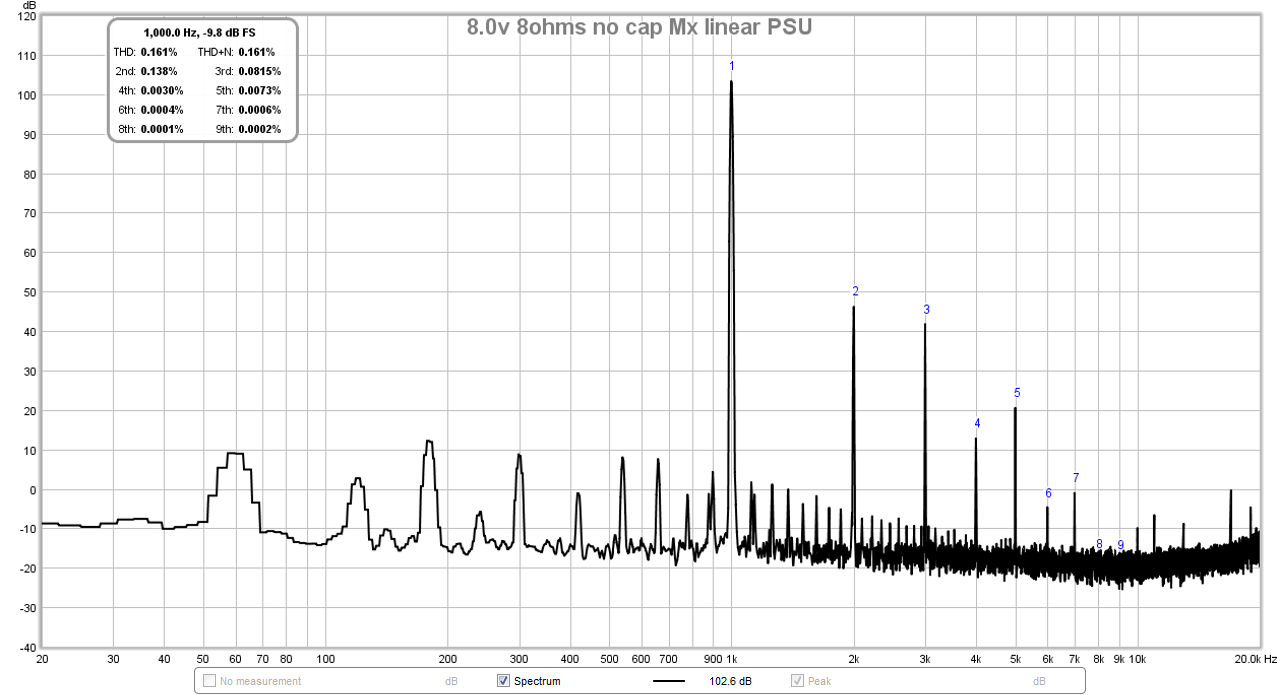
SMPS:
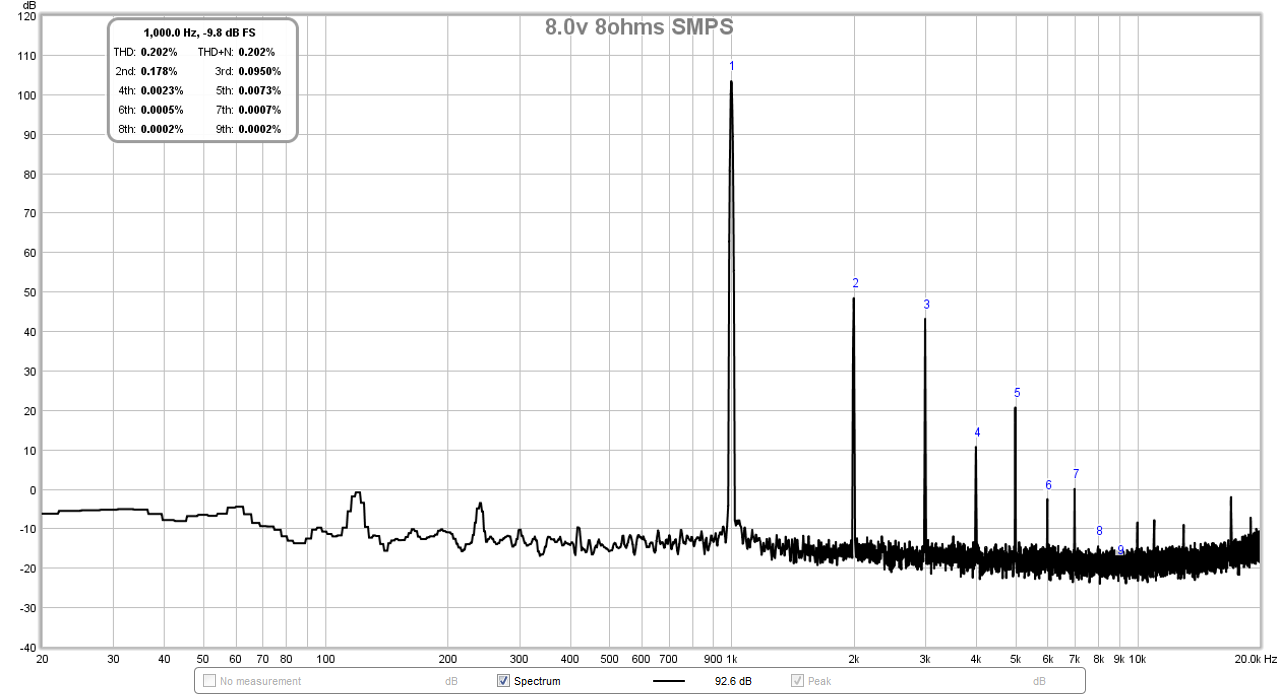
M2 with 8ohm load 8vrms
Linear with trafo:

SMPS:
Last edited:
That makes me think that the question here perhaps isn't which psu is the cleanest but which is most efficient. Of course, other things should also be encountered like output impedance....I would need to connect a trafo that makes 28vdc so that the cap Mx can drop to 24vdc. I would need a 20vac linear trafo to do that.
What you call "forest of noise" is more a "comb of 60Hz harmonics". The "forest of noise" is similar and in the region of -130dB in both cases.
This is not related to smps or linear supply, but to grounding the secondary circuit. I assume your smps is grounded, your linear transformer not. In that case you compare apples to peaches.
This is not related to smps or linear supply, but to grounding the secondary circuit. I assume your smps is grounded, your linear transformer not. In that case you compare apples to peaches.
- Status
- Not open for further replies.
- Home
- Amplifiers
- Power Supplies
- Strange Forest of Noise with Linear PSU
